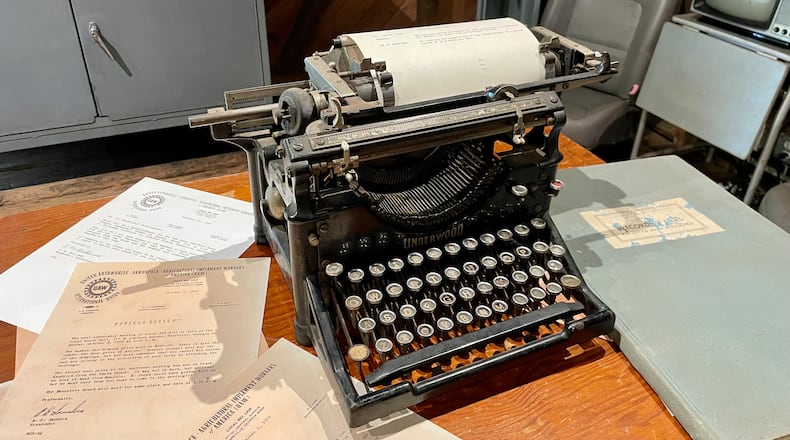The Hapeville Depot Museum is launching an exhibit that will celebrate a piece of history dear to many residents across metro Atlanta and the state of Georgia.
“Civil Rights and Workers Rights: An Exhibition of Hapeville’s Atlanta Assembly Plant” takes a look at the Ford automotive facility in Hapeville, one of the city’s biggest and most influential employers.
“This was the employer in Hapeville,” said Samantha Singleton, the museum’s manager. “But it didn’t just employ people from Hapeville. It employed people from all over metro Atlanta and Georgia in general. This was a massive factory with thousands of workers.”
Operating from 1947 to 2006, the facility was the manufacturer of some of Ford’s best selling cars, including the Ford Taurus, Ford Thunderbird, Ford LTD, Mercury Sable and Mercury Marquis.
But it also was a place where America’s evolution on race relations was reflected in the changes to its workforce. Jobs on the plant’s floor were initially offered only to white workers in the facility’s beginning. But Black employees were later welcomed, first to the janitorial services and later to the assembly line in the 60s during integration.
“It tells the story of 20th century America through an auto assembly plant,” Singleton said. “It’s the story of civil rights, worker’s rights, environmental history, labor history.”
The exhibit will include oral histories of former workers, documents, sound clips, worker uniforms and an 80′s-era TV playing videos from the factory floor. There will even be a Mercury Sable seat recovered from a junk yard.
“We were not afraid to get our hands dirty,” Singleton said. “Former workers loaned us objects, including uniforms, hats and commemorative pins. We have old steering wheels, chairs and documents. We want to make this as immersive as possible.”
Historian Kyle Stanton, the labor archive at Georgia State University and the Kenan Research Center at the Atlanta History Center helped pull the exhibit together, she said.
The facility was closed during Ford’s “Way Forward” restructuring to boost overall revenue, Singleton said. Ford considered keeping the plant open if it could be expanded, but found it couldn’t add floors to the facility because of height restrictions from nearby Hartsfield-Jackson Atlanta International Airport.
It also could not expand horizontally because of Interstate 75 and surrounding highways, she said.
Credit: Bob Chapman
Credit: Bob Chapman
The building was torn down after its closure and is now the home of the North American headquarters of German automaker Porsche.
“People don’t know that deeper story of how impactful this plant was,” Singleton said. “It’s interesting to learn that the year the plant closed it was ranked as the most productive automotive assembly plant in all of North America.”
About the Author
Keep Reading
The Latest
Featured




